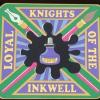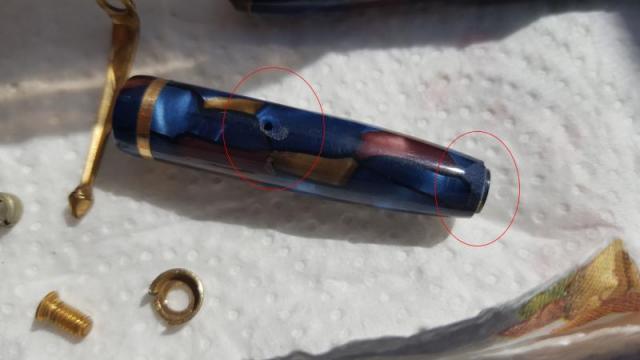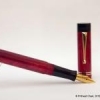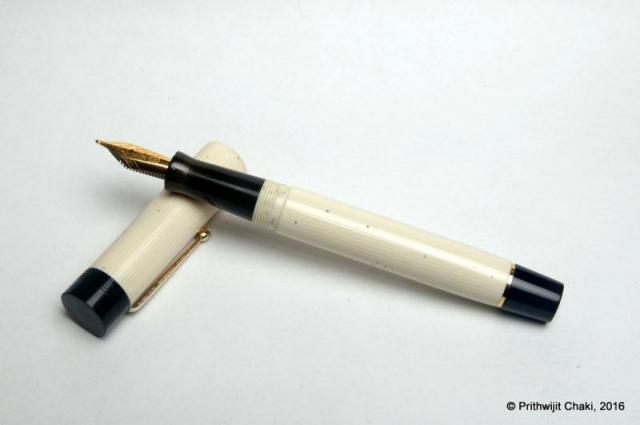Search the Community
Showing results for tags 'casein'.
-
Too bad most of the FPN folks won't look in this forum to see this. Their loss! Macniven & Cameron, Made in Great Britain, Waverly Series No P 5 This is a casein pen (based on smell while I sanded it down to restore the color and finish). Small pen, 4 1/2 inches capped, posts to a nice usable 5...
-
I've been called in to give my sister a hand with a Dinkie that's had a structural failure: https://imgur.com/PmMvCVm https://imgur.com/P2GqymJ https://imgur.com/U6RHUu3 We reckon that the pen was put together while the shellac was still slightly wet, it slurped out of the joint and glooped toward...
-
Earlier this year I acquired a Burnham 56, and it came with the very useful caution about not soaking it. All or some parts of it are made of casein, which I understand is not water resistant in any way. However, this pen needs cleaning and I'm wondering what the best process might be; I don't hav...
-
Too bad most of the FPN folks won't look in this forum to see this. Their loss! Macniven & Cameron, Made in Great Britain, Waverly Series No P 5 This is a casein pen (based on smell while I sanded it down to restore the color and finish). Small pen, 4 1/2 inches capped, posts to a nice usable 5...
-
Here I am with a question about restoring casein. I already cleaned the body, removed the old petrified sac, and ordered a new one (I'm waiting for it, I should receive it within days) The cap of the pen has some "corrosion" marks, see in the attached image the red circled spots. There is a way...
- 9 replies
-
- conway stewart
- cs
-
(and 2 more)
Tagged with:
-
Casein (from Latin caseus, "cheese") is a milk protein which we widely consume in various forms such as cheese and as a food additives. An interesting anecdote in the story of Caseins is that it was a popular ingredient for making some of the earliest plastics called Casein plastics. For a very brie...
-

How Do I Remove A Stuck (Shellac'd?) Barrel In A Casein Pen, And More? Cs Dinkie
BookCat posted a topic in Repair Q&A
Hi, I recently received a Conway Stewart Dinkie 550 which I purchased online; it was described as needing a new sac. I don't know much about casein, but read this on the CS website: Firstly, if I can't apply heat to the pen, how am I going to unstick the barrel from the section, which appear to...











